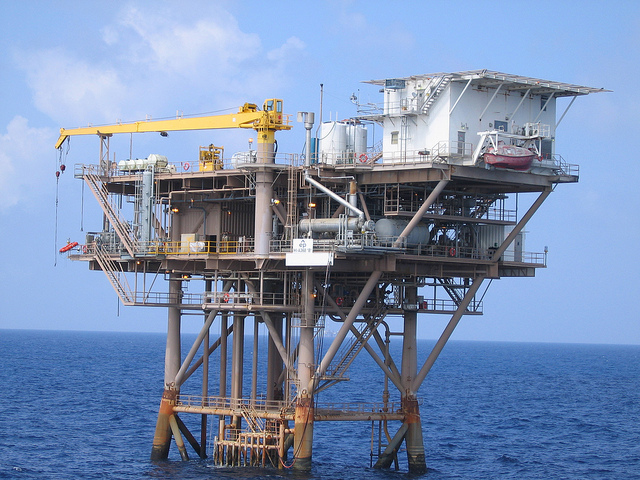Mexico reopened its energy market to outside producers in August for the first time in more than 75 years. Until now, private companies could only serve as contractors to the national hydrocarbon or electricity monopolies.
Mexicans formerly took pride in keeping a major natural resource in national hands. Pemex, the state petroleum monopoly, provided almost a third of federal revenues. Yet Pemex’s production began dropping in the mid-1990s. In 2013, the U.S. Energy Information Administration (EIA) predicted (PDF) that by 2025 Mexican oil production would plunge by more than 50 percent from 2010 levels, despite the presence of the equivalent of 450 billion barrels of oil in Mexico, on par with Saudi Arabia’s resources. On August 25, citing the reforms, the EIA predicted a turnaround in the decline over the next few years and a return to growth by 2025. Mexico is now on the verge of an oil and gas boom.
“The easy oil is gone or going,” said Mexico’s director of sustainable energy, Adrián Cordero Lovera, at a recent conference on renewable energy in Oaxaca de Juárez. So Mexico is looking to outside firms for help tapping its harder-to-reach oil stores as well as unconventional sources of hydrocarbons, such as natural gas in shale formations.
Mexico, the world’s 10th largest economy, faces huge demand for energy: its electricity production needs to double by 2028, according to an August 24 report published by the Atlantic Council, a Washington, D.C., think tank. Most of that new capacity will come from natural gas opened by the reform, says energy analyst David Goldwyn, lead author of the report.
Pemex will continue to drill at its existing onshore and shallow offshore oil installations and focus its exploration on so-called “probable” resources. Under the old regime, the government only permitted Pemex to take one-year loans, which prevented the firm from making long-term investments—the kind necessary for developing the deeper offshore wells and unconventional gas and oil resources that have made the U.S. the world’s second largest producer of hydrocarbons. The potential for such development in Mexico is large: the EIA estimates that Mexico’s shale and gas amount to the equivalent of 117 billion barrels of oil, just under a quarter of its total resources. Now that companies can pay royalties for licenses and sign profit-sharing contracts with Pemex, they are interested in partnering, Goldwyn said in an August 25 press conference call.
Climate impact and other risks
Critics argue that the reform neglects clean energy technologies. Engineer Octavio García Valladares, director of the renewable energy engineering program at the National Autonomous University in Mexico City, says that “far from being an energy reform, it’s a reform to continue exploiting petroleum.” Tapping its massive oil and gas resources will make it harder for Mexico to reach its ambitious—and legally binding—goal of cutting greenhouse gas emissions to 70 percent of 2000 levels by 2020. Mexico is already the 11th largest emitter of greenhouse gases.
There are some reasons to believe that Mexico is serious about minimizing its greenhouse gas impact. Although renewables make up only about a fifth of Mexico’s electricity capacity, they could comprise 17 to 18 gigawatts of the country’s next 55 gigawatts of new electrical generating capacity by 2024, says energy analyst Eduardo Reyes of PricewaterhouseCoopers in Mexico City. By then, the country’s 2012 climate law will require 35 percent of electrical generation to come from low-emissions sources. The reform also opened the country’s overpriced, inefficient electrical grid to competition. If its transmission losses—now at 18 percent—drop to 7 percent, the average for countries in the Organization for Economic Co-operation and Development (PDF), the country could burn less oil to meet its energy demand.
Still, more oil drilling could mean more spilling. In 1979, a Pemex exploratory offshore rig failed, releasing between 3 million and 3.5 million barrels of oil into the Gulf of Mexico. It was the biggest spill in the Gulf until the 2010 Deepwater Horizon spill of almost 5 million barrels. Yet by 2010, Pemex’s overall safety record had reached international standards and this year it increased the staff and budgets of its energy regulatory arms, Goldwyn says. “The government is committed to matching U.S. standards in terms of safety and control in the deepwater,” he adds.Yet like the U.S., Mexico faces major management and regulatory challenges as it endeavors to extract its oil and gas resources while still meeting its environmental and climate goals.
